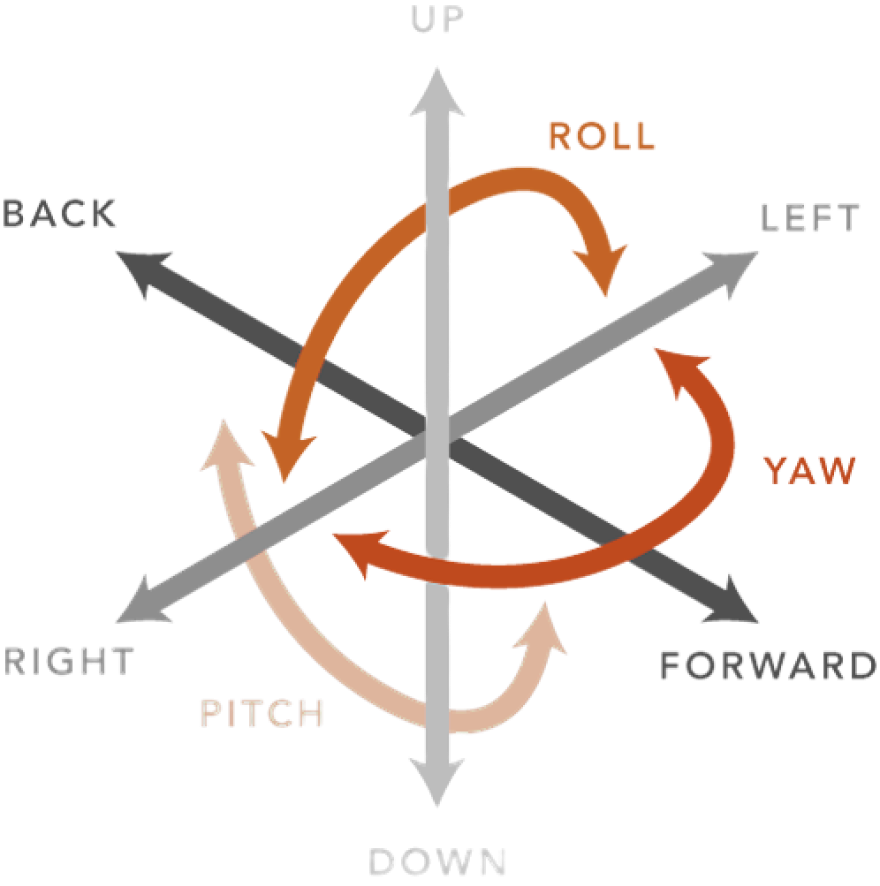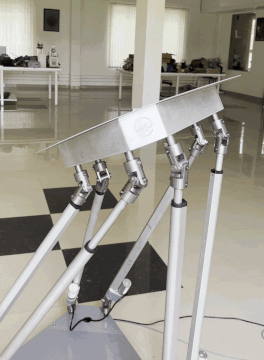The Humble Beginnings of The Stewart Platform
- Spacien #8

- Apr 3, 2023
- 3 min read
The mighty Stewart Platform, which you may also know as -
Stewart-Gough Platform, Hexapod, Motion Base, Motion Simulator, Parallel Robot, 6 DoF platform... And many more names!
The Stewart Platform has a rich history. They were first deployed in 1954 by V E Gough to test tires at Dunlop in the UK. A decade later, D. Stewart etched his name forever with the motion base by conceptualising a flight simulator to train pilots. The paper was titled A Platform with Six Degrees of Freedom. Since then, Flight Simulators have been one of the most common applications for these platforms.
So, what is a Stewart Platform? As described by D. Stewart, Stewart platform “is a mechanism which has six degrees of freedom, controlled in any combination by six motors, each having a ground abutment”. Any object in 3-Dimensional space has six degrees of freedom, it can move along in the X, Y and Z axis or it can rotate around it. Linear movements along the axes are called Heave, Sway and Surge. Whereas Rotational movements around the axes are called Pitch, Yaw and Roll. To replicate these movements, a free moving top platform can be connected to a static base platform using six actuators. Mounting these actuators in a hexapod and prismatic manner allows the top platform to move across the six degrees of freedom! The hexagon set-up earned it the name Hexapod!
In 1965, diverging from conventional simulators, the motion platform made by D. Stewart wasn’t limited by having fixed axes in relation to the ground. This unique attribute empowers it to authentically replicate flight maneuvering conditions, seamlessly integrating control on-ground simulations into the axes of the new attitude, all within the design's amplitude constraints.
And here you go -
The Six Degrees of Freedom:

A classic Stewart Platform:

Motion technology has come a long way today. With linear actuators, we have hexapods that can achieve any desired motion and precision capability with payloads ranging from few grams to metric tons! Hexapods have found their place in a wide variety of industries. They play a crucial role in healthcare, assisting surgeons in delicate procedures with precision. In the automotive sector, they ensure stable and controlled vehicle movements. Their versatility is evident in manufacturing, where they enhance precision assembly processes. High speed motion capacity allows them to offer immersive experiences in the entertainment industry, taking us on exciting virtual reality adventures. Some have started to rehabilitate patients with gait and injuries while some are using them to generate energy from ocean waves! Truly, Hexapod has applications limited only by effort and imagination.
At the cosmic front, Hexapods are responsible for highly precise movement of antennas, mirrors and various other spacecraft subsystems in space. Their precision and rigidity make them the go-to option for purposes of space-grade manufacturing, alignment, assembly, testing, calibration and various other applications where accurate motion and position control is crucial.
Beyond the cosmos and back on Earth, Stewart Platforms continue to orchestrate wonders. Their applications extend to military training, seismic testing, and even artistic installations. Imagine architectural designs brought to life with kinetic sculptures, all thanks to the prowess of these platforms.
Are you excited about Hexapods and their applications? Our next blog shall be about various cool applications of it and how it is revolutionising manufacturing, design, research, training and entertainment! Stay tuned for the next one!



Comments